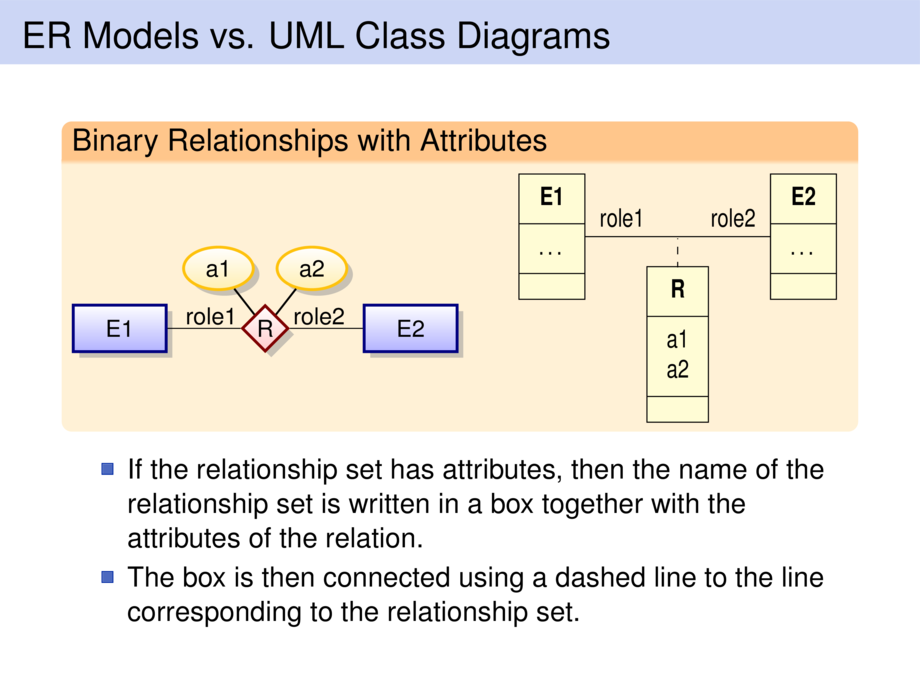



































































































91/98
\begin{frame}
\frametitle{ER Models vs. UML Class Diagrams}
\begin{goal}{Binary Relationships with Attributes}
\begin{minipage}{.49\textwidth}
\begin{center}
\scalebox{.92}{\small
\begin{tikzpicture}[every edge/.style={link},node distance=22mm,>=triangle 45,inner sep=.5mm]
\begin{scope}
\node[relationship] (R) {R};
\node (l) [left of=R,entity] {E1}; \draw (R) -- node[above,pos=.4] {role1} (l);
\node (r) [right of=R,entity] {E2}; \draw (R) -- node[above,pos=.4] {role2} (r);
\node [attribute,above left of=R,yshift=2mm] {a1} edge (R);
\node [attribute,above right of=R,yshift=2mm] {a2} edge (R);
\end{scope}
\end{tikzpicture}
}
\end{center}
\end{minipage}
\begin{minipage}{.49\textwidth}
\begin{center}
\quad\quad\begin{tikzpicture}[nodes={xscale=.8}]
\umlclass[width=5mm]{E1}{
\ldots
}{}
\umlclass[x=3.5cm,width=5mm]{E2}{
\ldots
}{}
\umlassoc[arg1=role1,pos1=0.2,arg2=role2,pos2=.8,name=assoc]{E1}{E2}
\umlassocclass[width=5mm,geometry=|-|,x=1.75cm, y=-1.5]{R}{assoc-1}{a1\\a2}{}
\end{tikzpicture}
\end{center}
\end{minipage}
\end{goal}
\begin{itemize}
\item If the relationship set has attributes,
then the name of the relationship set is written in a box
together with the attributes of the relation.
\item The box is then connected using a dashed line to the
line corresponding to the relationship set.
\end{itemize}
\end{frame}

